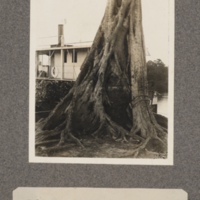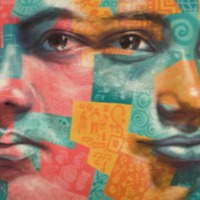
Deborah
There is an estimated 48,000 people living in modern slavery in Libya (GSI 2018). Libya is a major transit destination for migrants and refugees hoping to reach Europe by sea. Human trafficking networks have prospered amid lawlessness, created by the warring militias that have been fighting for control of territories since the toppling of Muammar Gaddafi in 2011. Highly organized trafficking and migrants smuggling networks that reach into Libya from Niger, Nigeria, Chad, Eritrea, Ethiopia, Somalia, Sudan, and other sub-Saharan states subject migrants to forced labor and forced prostitution through fraudulent recruitment, confiscation of identity and travel documents, withholding or non-payment of wages, debt bondage, and verbal, physical, and sexual abuse. In some cases, migrants reportedly pay smuggling fees to reach Tripoli, but once they cross the Libyan border they are sometimes abandoned in southern cities or the desert where they are susceptible to severe forms of abuse and human trafficking. Deborah left her home in Nigeria because her stepmother treated her badly. She wanted to become a fashion designer and when she met a man who promised to take her to Europe, she gladly accepted. It was a big surprise to her when after arriving in Libya, she was told that the journey stopped there, and she had to start working as a prostitute.
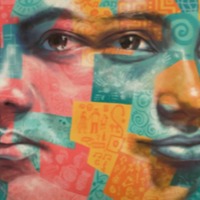
Abraham
There is an estimated 48,000 people living in modern slavery in Libya (GSI 2018). Libya is a major transit destination for migrants and refugees hoping to reach Europe by sea. Human trafficking networks have prospered amid lawlessness, created by the warring militias that have been fighting for control of territories since the toppling of Muammar Gaddafi in 2011. Highly organized trafficking and migrants smuggling networks that reach into Libya from Niger, Nigeria, Chad, Eritrea, Ethiopia, Somalia, Sudan, and other sub-Saharan states subject migrants to forced labor and forced prostitution through fraudulent recruitment, confiscation of identity and travel documents, withholding or non-payment of wages, debt bondage, and verbal, physical, and sexual abuse. In some cases, migrants reportedly pay smuggling fees to reach Tripoli, but once they cross the Libyan border they are sometimes abandoned in southern cities or the desert where they are susceptible to severe forms of abuse and human trafficking. Abraham chose to travel from Eritrea to Europe through smugglers, however he found himself trafficked by brokers and being locked inside a warehouse and held for ransom for over a year. After being released from the trafficker’s camp, he and two friends, Kidane, and Berhane, decided to cross the sea together. They were put out to sea in an old wooden boat that was leaking. They were three days at sea, with no food and no water to drink. Some of the passengers died. Today, the three friends are earnestly advising other people not to go on this dangerous journey. They say enough is enough, irregular travel through Libya should stop now.
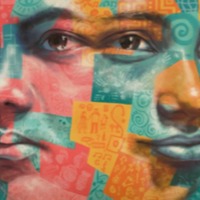
Kidane
There is an estimated 48,000 people living in modern slavery in Libya (GSI 2018). Libya is a major transit destination for migrants and refugees hoping to reach Europe by sea. Human trafficking networks have prospered amid lawlessness, created by the warring militias that have been fighting for control of territories since the toppling of Muammar Gaddafi in 2011. Highly organized trafficking and migrants smuggling networks that reach into Libya from Niger, Nigeria, Chad, Eritrea, Ethiopia, Somalia, Sudan, and other sub-Saharan states subject migrants to forced labor and forced prostitution through fraudulent recruitment, confiscation of identity and travel documents, withholding or non-payment of wages, debt bondage, and verbal, physical, and sexual abuse. In some cases, migrants reportedly pay smuggling fees to reach Tripoli, but once they cross the Libyan border they are sometimes abandoned in southern cities or the desert where they are susceptible to severe forms of abuse and human trafficking. Kidane traveled from Eritrea to Europe through smugglers, however he found himself trafficked by brokers and being locked inside a warehouse for two years. After being released from the trafficker’s camp, he and two friends, Abraham and Berhane, decided to cross the sea together. They were put out to sea in an old wooden boat that was leaking. They were three days at sea, with no food and no water to drink. Some of the passengers died. Today, the three friends are earnestly advising other people not to go on this dangerous journey. They say enough is enough, irregular travel through Libya should stop now.
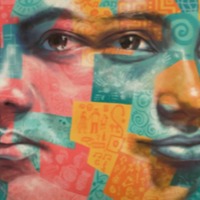
Berhane
There is an estimated 48,000 people living in modern slavery in Libya (GSI 2018). Libya is a major transit destination for migrants and refugees hoping to reach Europe by sea. Human trafficking networks have prospered amid lawlessness, created by the warring militias that have been fighting for control of territories since the toppling of Muammar Gaddafi in 2011. Highly organized trafficking and migrants smuggling networks that reach into Libya from Niger, Nigeria, Chad, Eritrea, Ethiopia, Somalia, Sudan, and other sub-Saharan states subject migrants to forced labor and forced prostitution through fraudulent recruitment, confiscation of identity and travel documents, withholding or non-payment of wages, debt bondage, and verbal, physical, and sexual abuse. In some cases, migrants reportedly pay smuggling fees to reach Tripoli, but once they cross the Libyan border they are sometimes abandoned in southern cities or the desert where they are susceptible to severe forms of abuse and human trafficking. Berhane chose to travel from Eritrea to Europe through smugglers, however he found himself trafficked by brokers and being locked inside for a year. After being released from the trafficker’s camp, he and two friends, Abraham and Kidane, decided to cross the sea together. They were put out to sea in an old wooden boat that was leaking. They were three days at sea, with no food and no water to drink. Some of the passengers died. Today, the three friends are earnestly advising other people not to go on this dangerous journey. They say enough is enough, irregular travel through Libya should stop now. Berhane’s narrative is part of a conversation with two other Eritrean men in a refugee reception centre in Malta, discussing their experience of taking the Libya route to Europe.
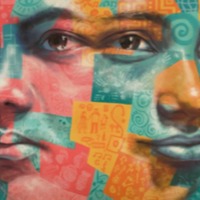
Abdirahman Hashi
There is an estimated 48,000 people living in modern slavery in Libya (GSI 2018). Libya is a major transit destination for migrants and refugees hoping to reach Europe by sea. Human trafficking networks have prospered amid lawlessness, created by the warring militias that have been fighting for control of territories since the toppling of Muammar Gaddafi in 2011. Highly organized trafficking and migrants smuggling networks that reach into Libya from Niger, Nigeria, Chad, Eritrea, Ethiopia, Somalia, Sudan, and other sub-Saharan states subject migrants to forced labor and forced prostitution through fraudulent recruitment, confiscation of identity and travel documents, withholding or non-payment of wages, debt bondage, and verbal, physical, and sexual abuse. In some cases, migrants reportedly pay smuggling fees to reach Tripoli, but once they cross the Libyan border they are sometimes abandoned in southern cities or the desert where they are susceptible to severe forms of abuse and human trafficking. Abdirahman was training to become a photographer in his hometown Hargeisa, Somalia when he started receiving pictures and messages from friends who had travelled irregularly to Europe. They were bragging about how life in Europe was wonderful and easy and Abdirahman felt an urge to go there himself. He and some friends decided to try their luck and contacted a smuggler. They had been promised the journey would be fast and easy. Already the first leg, across the sea to Yemen and from there to Sudan, brought a sharp reality check. Many fellow passengers died on the overloaded boat which had a capacity of 50 passengers but had 200 on board. On the second sea journey to Sudan the ship got lost and they ran out of food. When they finally reached the Sudanese shore, they were handed over to ruthless smugglers. They were put on buses and started a long drive through a hot desert with no food and only water mixed with petrol to drink, to prevent them feeling hungry. In Libya, their party was attacked by bandits, and they were taken to a traffickers’ camp where they were brutally beaten to force their families to pay ransom. When the ransom money had been paid, the camp was attacked by a rival gang and Abdirahman was kidnapped once again. At last, he managed to flee his tormentors and was rescued by police. He was put into detention and eventually offered repatriation, which he gratefully accepted.
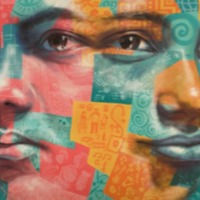
Miracle
There are an estimated 10,000 people living in modern slavery in Lebanon (GSI 2018). Men, women, and children among the estimated 1.3 million Syrian refugees in Lebanon are at high risk of sex trafficking and forced labour. There are some restrictions on Syrians’ ability to work legally in Lebanon and the enforcement of visas and residence permit laws increase this population’s vulnerability to trafficking. Syrians are commonly involved in the exploitation of other Syrians in Lebanon, particularly targeting refugees fleeing the conflict. Syrian children are reportedly vulnerable to forced early marriages—which can lead to commercial sexual exploitation and forced labour—and children displaced within the country continue to be subjected to forced labour, particularly by organized begging rings. Miracle left Nigeria after meeting someone who promised to help her find a job in Europe. On the way she found out she was pregnant and her smuggler attempted to force her to abort the pregnancy. When she arrived in Libya, Miracle and the other girls were locked up and sold to a Madam to be forced into prostitution. However, because Miracle was pregnant, she could not be sold. She spent two months locked inside a room before being taken to boat to cross over to Europe. When she arrived in Europe, she found that she had been deceived by promises of work.
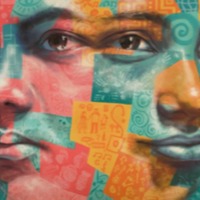
Nora
There are an estimated 145,000 people liing in conditions of modern slavery in Italy (GSI 2018). Italy is a destination, transit, and source country for women, children, and men subjected to sex trafficking and forced labour. Victims originate from Nigeria, Romania, Morocco, China, and other countries. Female victims are often subjected to sex trafficking in Italy after accepting promises of employment as dancers, singers, models, restaurant servers, or caregivers. Romanian and Albanian criminal groups force Eastern European women and girls into commercial sex. Nora’s family was poor and constantly worrying how to make ends meet. One day she met a woman who told her she could arrange a job for her abroad in Europe. Nora thought this was an opportunity to support her family and agreed. Before leaving Nigeria, she and others were required to go through a voodoo ceremony and swear an oath to pay back the woman for travel costs. The route went through Niger and Libya, as soon as they left Nigeria, the woman’s attitude changed. Nora and the other women she travelled with were trafficked into prostitution and forced to work in brothels along their journey in Niger, Libya, and Italy.
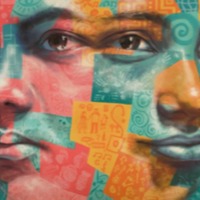
Vanessa
There is an estimated 48,000 people living in modern slavery in Libya (GSI 2018). Libya is a major transit destination for migrants and refugees hoping to reach Europe by sea. Human trafficking networks have prospered amid lawlessness, created by the warring militias that have been fighting for control of territories since the toppling of Muammar Gaddafi in 2011. Highly organized trafficking and migrants smuggling networks that reach into Libya from Niger, Nigeria, Chad, Eritrea, Ethiopia, Somalia, Sudan, and other sub-Saharan states subject migrants to forced labor and forced prostitution through fraudulent recruitment, confiscation of identity and travel documents, withholding or non-payment of wages, debt bondage, and verbal, physical, and sexual abuse. In some cases, migrants reportedly pay smuggling fees to reach Tripoli, but once they cross the Libyan border they are sometimes abandoned in southern cities or the desert where they are susceptible to severe forms of abuse and human trafficking. In Nigeria, Vanessa struggled to house and feed herself and her three children after being thrown out of their home by her abusive husband. She worked as a hawker, selling fruit, and as a hairdresser, but worried constantly about money. Then a friend mentioned a sister in Italy with a hairdressing salon and recommended Vanessa to work there. She was told it would be an easy journey through Libya, however after arriving in Tripoli, Vanessa and her fellow travellers were housed in a smuggler’s compound when a fight broke out among neighbourhood gangs. During this time, her baby developed a fever and became critically ill, dying shortly afterward. She set off from Tripoli on a smuggler’s boat headed for Italy, but the boat was captured by bandits who took them back to Libya and held the passengers for ransom. Vanessa’s friend's sister in Italy paid for her release, but she was unable to make it to Italy. When she tried for a second time, she was caught by the Libyan Coast Guard, brought back, and imprisoned. A Ghanaian man bailed her out of prison only to sell her to a brothel where she had to work as a prostitute to pay off her debt.
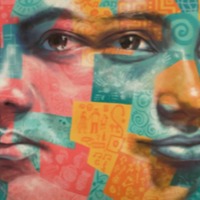
Vera
There is an estimated 48,000 people living in modern slavery in Libya (GSI 2018). Libya is a major transit destination for migrants and refugees hoping to reach Europe by sea. Human trafficking networks have prospered amid lawlessness, created by the warring militias that have been fighting for control of territories since the toppling of Muammar Gaddafi in 2011. Highly organized trafficking and migrants smuggling networks that reach into Libya from Niger, Nigeria, Chad, Eritrea, Ethiopia, Somalia, Sudan, and other sub-Saharan states subject migrants to forced labor and forced prostitution through fraudulent recruitment, confiscation of identity and travel documents, withholding or non-payment of wages, debt bondage, and verbal, physical, and sexual abuse. In some cases, migrants reportedly pay smuggling fees to reach Tripoli, but once they cross the Libyan border they are sometimes abandoned in southern cities or the desert where they are susceptible to severe forms of abuse and human trafficking. At her school in Nigeria, Vera and her brother were being threatened by gangsters. The situation became dangerous, and her mother was very worried about her security. Vera felt she had no other option than to flee from the country. She contacted a smuggler who would take her to Europe via Libya. She was surprised when the woman frankly suggested that she could earn money both in Libya and in Europe as a prostitute. Vera said she would not do such a thing, and the woman did not press the issue. When they arrived in Libya, she called her and told her that now, she must work as a prostitute to pay her debt.
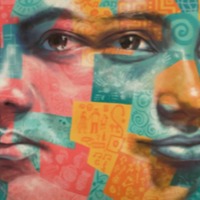
Yasmiin
There is an estimated 48,000 people living in modern slavery in Libya (GSI 2018). Libya is a major transit destination for migrants and refugees hoping to reach Europe by sea. Human trafficking networks have prospered amid lawlessness, created by the warring militias that have been fighting for control of territories since the toppling of Muammar Gaddafi in 2011. Highly organized trafficking and migrants smuggling networks that reach into Libya from Niger, Nigeria, Chad, Eritrea, Ethiopia, Somalia, Sudan, and other sub-Saharan states subject migrants to forced labor and forced prostitution through fraudulent recruitment, confiscation of identity and travel documents, withholding or non-payment of wages, debt bondage, and verbal, physical, and sexual abuse. In some cases, migrants reportedly pay smuggling fees to reach Tripoli, but once they cross the Libyan border they are sometimes abandoned in southern cities or the desert where they are susceptible to severe forms of abuse and human trafficking. Yasmiin had a small restaurant in her home town in Somalia. One day she was kidnapped by some men and raped. After that she became ostracised in her community, people stopped talking to her and stopped coming to her restaurant. She could not stay there any longer and decided to leave Somalia, taking the smuggler route through Yemen and Sudan to Libya, hoping to reach Europe. She was imprisoned in Libya and eventually evacuated by UNHCR to Niger where she is waiting for re-settlement.
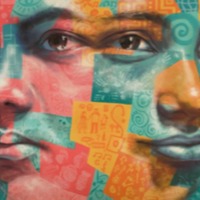
Yehia
Egypt is a source, transit and destination country for women and children trafficked for the purposes of forced labour and sexual exploitation. The local dimension of human trafficking includes child labour, the sexual exploitation of children, the sale of human organs, and various forms of prostitution. Children are forced into domestic service, street begging drug trafficking, quarrying, and agricultural work in the country. NGOs report the lack of economic and educational opportunities cause family members to subject women and girls to sex trafficking to supplement family income, and in some cases women and girls are raped to coerce or forced them into prostitution. Child sex tourism occurs in Cairo, Alexandira, and Luxor and Egyptian women and girls are purchased for 'temporary' or 'summer marriages' for the purpose of commercial sex, including sex trafficking, and forced labour. Egyptian adults are subjected to forced labour in construction, agriculture, domestic work, and low-paying service jobs in the region. Refugees from Syria, Sudan, South Sudan, and Yemen who have settled in Egypt in Egypt are also at an increased risk of trafficking, forced labour, forced marriage, and sexual exploitation. When the civil war in Yemen erupted in 2015, Yehia’s parents advised him to flee to Egypt to avoid conscription by one of the warring factions. Having arrived in Cairo via Sudan, Yehia contacted a smuggler who promised to take him across the sea to Italy. He was taken to a beach near Alexandria with other travellers and boarded a small boat, but the smugglers turned out to be gangsters who robbed the passengers and were going to put them ashore when the Coast Guard arrived and rescued them. Yehia was sent back to Sudan and tried a second time to get to Italy, but this time he was kidnapped and detained on a farm in the Egyptian desert.
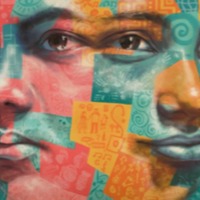
Caroline
There is an estimated 48,000 people living in modern slavery in Libya (GSI 2018). Libya is a major transit destination for migrants and refugees hoping to reach Europe by sea. Human trafficking networks have prospered amid lawlessness, created by the warring militias that have been fighting for control of territories since the toppling of Muammar Gaddafi in 2011. Highly organized trafficking and migrants smuggling networks that reach into Libya from Niger, Nigeria, Chad, Eritrea, Ethiopia, Somalia, Sudan, and other sub-Saharan states subject migrants to forced labor and forced prostitution through fraudulent recruitment, confiscation of identity and travel documents, withholding or non-payment of wages, debt bondage, and verbal, physical, and sexual abuse. In some cases, migrants reportedly pay smuggling fees to reach Tripoli, but once they cross the Libyan border they are sometimes abandoned in southern cities or the desert where they are susceptible to severe forms of abuse and human trafficking. Caroline thought she was travelling to Europe with her boyfriend, but he sold her to a woman who took her to Libya and sold her on again to another man. She was taken to Tripoli and forced into prostitution. After Caroline escaped prostitution, she went to live in a residential house. But this house was raided and she was put in a prison where she was subjected to physical and sexual abuse daily. She was finally able to escape the prison by jumping a fence and found herself at a place where people were getting on a boat to Italy. She joined them, but the journey was not easy.
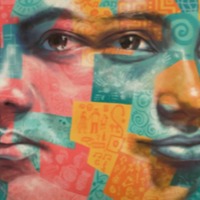
Charya
There are an estimated 610,000 people living in conditions of modern slavery in Thailand (GSI 2018). Men, women and children are victims of human trafficking for forced labour in the Thai fishing industry, subjected to physical abuse, excessive and inhumane working hours, sleep and food deprivation, forced use of methamphetamines and long trips at sea confined to the vessel. Due to the fishing industry relying on trans-shipments at sea to reduce expenditure, some find themselves trapped on long-haul trawlers for years at a time. This makes the monitoring of enslaves labour on fishing vessels costly and difficult. 201 Charya was trafficked on to a Thai fishing vessel where he was forced to work long hours and denied medication. He tells of his experience of illness on the vessel.

Christian Missionary Party Crossing the River
A Christian missionary party crossing the Aruwimi river in the Aruwimi Welle zone of the Belgian Congo. This image (Neg. 102) formed part of the Harris Lantern Slide Collection and was used in the Harris Lecture No.2. Under King Leopold II the Congo Free State used mass forced labour to extract rubber from the jungle for the European market. As consumer demand grew King Leopold II's private army - the Force Publique - used violent means to coerce the population into meeting quotas, including murder, mutilation, rape, village burning, starvation and hostage taking. Alice Seeley Harris and her husband Reverend John H. Harris were missionaries in the Congo Free State from the late 1890s. Alice produced a collection of images documenting the horrific abuses of the African rubber labourers. Her photographs are considered to be an important development in the history of humanitarian campaigning. The images were used in a number of publications. The Harrises also used the photographs to develop the Congo Atrocity Lantern Lecture which toured Britain and the the USA raising awareness of the issue of colonial abuses under King Leopold II's regime. Source: Antislavery International and Panos Pictures.
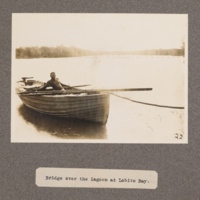
Bridge over the lagoon at Lobito Bay
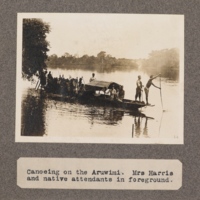
Canoeing on the Aruwimi. Mrs. Harris and native attendants in foreground
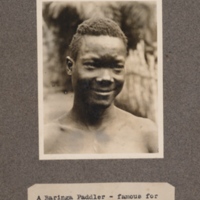
A Baringa paddler – famous for his boat songs
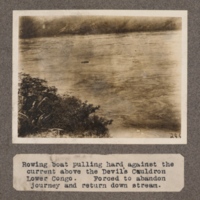
Rowing boat pulling hard against the current above the Devil's Cauldron, lower Congo. Forced to abandon journey and return down stream
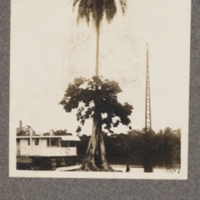
Palm in grip of parasite
